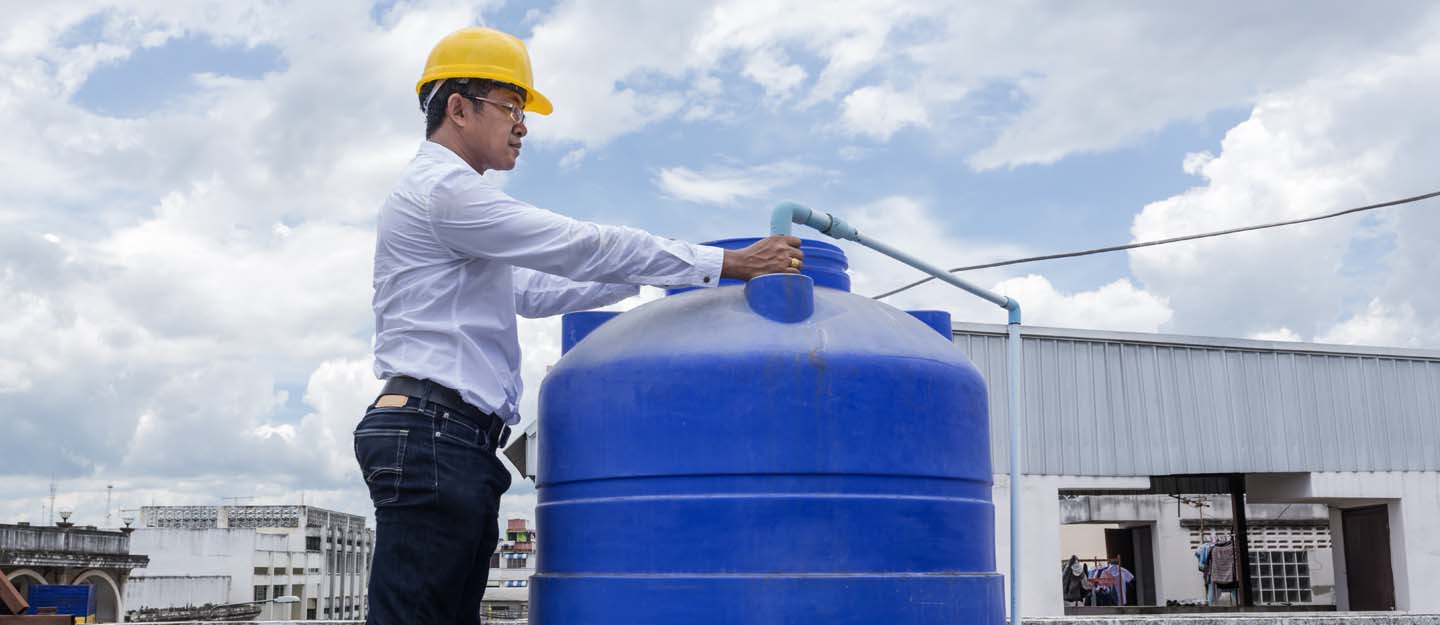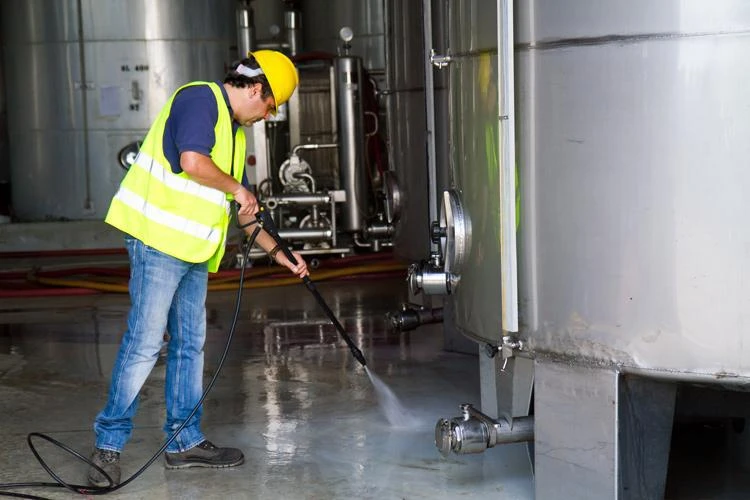Water is a fundamental resource for human survival, and it is crucial to ensure that the water we consume is clean and safe. One essential aspect of maintaining a clean water supply is regular water tank cleaning. Water tanks, whether for domestic or commercial use, can accumulate sediment, bacteria, and other contaminants over time, compromising the quality of the stored water. In this article, we will explore the importance of water tank cleaning, the process involved, and the benefits it provides in ensuring a clean and healthy water supply.
Why is Water Tank Cleaning Important?
Regular cleaning of water tanks is essential for several reasons:
1. Preventing Contamination: Over time, sediment, rust, algae, and other contaminants can accumulate in water tanks. If left uncleaned, these substances can contaminate the stored water, posing health risks to consumers.
2. Maintaining Water Quality: By cleaning water tanks, the quality of the stored water can be preserved. Clean tanks help prevent odor, discoloration, and unpleasant taste, ensuring that the water remains fresh and suitable for consumption.
3. Preventing Bacterial Growth: Stagnant water in poorly maintained tanks provides an ideal environment for bacterial growth, including harmful bacteria like Legionella. Regular cleaning helps eliminate bacterial colonies, reducing the risk of waterborne diseases.
4. Extending Tank Lifespan: Regular maintenance, including cleaning, can prolong the lifespan of water tanks. Removing sediment and preventing corrosion helps prevent structural damage, leaks, and the need for premature replacements.
The Water Tank Cleaning Process
The process of cleaning a water tank typically involves the following steps:
1. Drainage of the Tank
Before cleaning, the water tank is emptied of its contents. This can be done by opening the tank’s outlet valve or using a pump to remove the water.
2. Removal of Sediment and Debris
Once the tank is empty, any sediment, debris, and sludge accumulated at the bottom of the tank are manually removed. This can be done using brushes, scrapers, or high-pressure water jets.
3. Scrubbing and Disinfection
After removing the visible sediment, the tank’s interior walls, ceiling, and other surfaces are scrubbed using a suitable cleaning agent. This helps eliminate any remaining contaminants and bacteria. It is important to use non-toxic and approved disinfectants to ensure the water remains safe for use.
4. Rinsing and Flushing
Following the scrubbing process, the tank is thoroughly rinsed and flushed with clean water. This step helps remove any residual cleaning agents and ensures that the tank is free from any remaining debris or contaminants.
5. Drying and Inspection
Once the rinsing process is complete, the tank is allowed to dry naturally. This is important to prevent moisture buildup and the growth of mold or bacteria. After drying, a detailed inspection of the tank is conducted to check for any signs of damage, leaks, or other issues that require repair or maintenance.
6. Refilling the Tank
Once the tank has been cleaned, inspected, and deemed fit for use, it can be refilled with clean and treated water.
Benefits of Water Tank Cleaning
Regular cleaning of water tanks offers several benefits:
- Safe and Healthy Water: Cleaning removes contaminants, sediment, and bacteria, ensuring that the stored water is safe and healthy for consumption.
- Improved Water Quality: By eliminating odor, discoloration, and unpleasant taste, cleaning enhances the overall quality of the water.
- Reduced Health Risks: Cleaning helps prevent the growth of harmful bacteria and the spread of waterborne diseases, protecting the health of individuals who consume the water.
- Extended Tank Lifespan: Regular maintenance, including cleaning, can extend the lifespan of water tanks by preventing corrosion, structural damage, and the need for premature replacements.
- Cost Savings: Proper maintenance, including regular cleaning, can help avoid costly repairs, replacements, and health-related expenses associated with contaminated water.
Frequently Asked Questions (FAQs)
1. How often should water tanks be cleaned?
The frequency of water tank cleaning depends on factors such as tank size, water usage, and local water quality. In general, it is recommended to clean domestic water tanks at least once a year. However, tanks in areas with poor water quality or those used for commercial purposes may require more frequent cleaning.
2. Can I clean my water tank myself?
While it is possible to clean a water tank independently, it is recommended to hire professional tank cleaning services. Professionals have the necessary equipment, expertise, and knowledge of safety protocols to ensure effective and safe cleaning.
3. What are the signs that indicate the need for water tank cleaning?
Signs that indicate the need for water tank cleaning include foul odor or taste in the water, discoloration, visible sediment or debris in the tank, and the presence of algae or bacterial growth.
Call ~ 7447474074 ~ To Book your Service. Best Service @ Affordable Cost Assured.
4. Can I use the water during the cleaning process?
No, it is not safe to use the water during the cleaning process. It is crucial to empty the tank and ensure it is thoroughly cleaned and disinfected before refilling it with water for consumption.
5. Are there any precautions to take during water tank cleaning?
During the cleaning process, it is essential to use appropriate personal protective equipment (PPE) to protect against exposure to contaminants and cleaning agents. Additionally, proper hygiene practices should be followed, such as handwashing after handling cleaning materials.
6. Can water tank cleaning be done for underground tanks?
Yes, water tank cleaning can be performed for underground tanks as well. However, the process may require specialized equipment and techniques to access and clean the tank effectively.
Regular cleaning of water tanks is crucial for maintaining a clean and safe water supply. By removing sediment, debris, and bacteria, water tank cleaning helps prevent contamination, improves water quality, and reduces health risks associated with consuming contaminated water. Additionally, it extends the lifespan of water tanks and contributes to cost savings by avoiding costly repairs and replacements. To ensure effective cleaning and optimal results, it is advisable to seek professional water tank cleaning services. Prioritizing water tank cleaning promotes the well-being of individuals and ensures access to clean and healthy water for daily use.
Deep Cleaning Services in Thane ~ Water Tank Cleaning in Thane ~ Pest Control Services in Thane ~ Septic Tank Cleaning in Thane ~ Drainage line cleaning in Thane ~ Housekeeping Services in Thane ~ Well Cleaning in Thane ~ STP Operation Services in Thane ~ STP Maintenance Services in Thane ~ STP Setup Services in Thane ~ STP Installation Services in Thane ~ STP Cleaning Services in Thane ~ Ground Terrace Cleaning Services in Thane ~ Ground Cleaning Services in Thane ~ Terrace Cleaning Services in Thane ~ Construction Waste Disposal in Thane ~ Post Construction Cleaning Services in Thane ~ Post Renovation Cleaning Services in Thane




